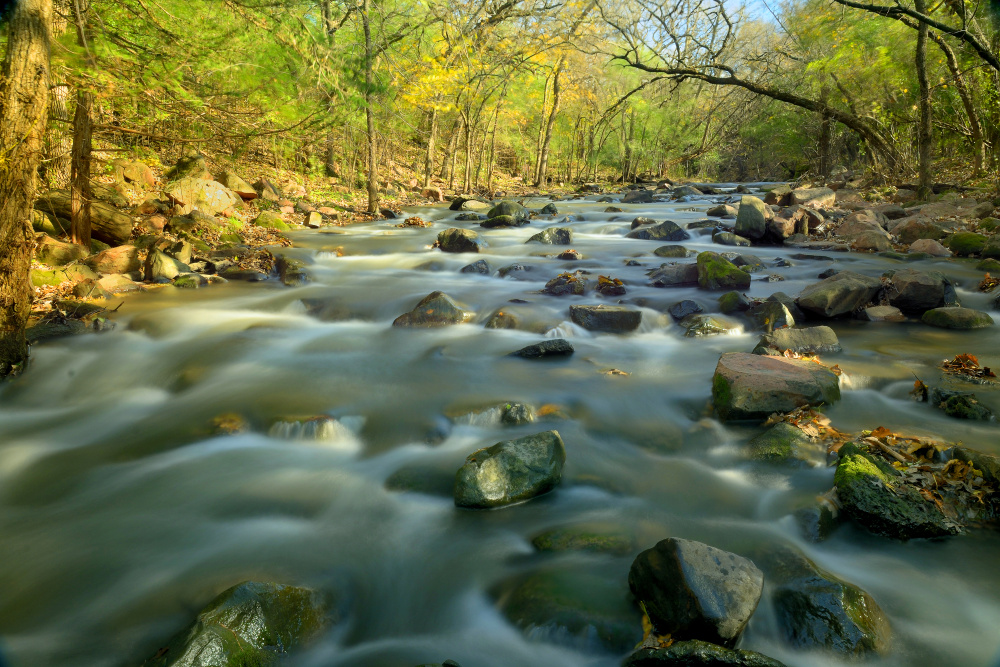
The camera is a creative tool used to make artistic images, much like a pencil or paint brush. It is much more limited, in that it captures only what is in front of the lens, rather than creating whatever the artist imagines. This makes photography a uniquely difficult art form, as the photographer must find the scene, with the weather conditions they desire, at the correct time of day and year, and with the sky they desire. However, it is not without artistic control–shutter speed, viewing angle, exposure, filters, depth of field, and an array of techniques can create interesting effects to make images more interesting and convey different moods.
One of the most common settings used to change the feel of an image is shutter speed. A longer exposure will allow objects in the image to have motion blur. I most commonly use this in landscapes with water, but it can also be used on clouds, crops, grass, or with anything that’s moving through the scene. One can also use a slower shutter when panning to give the background blur which gives a feeling of speed to a clear subject. How much motion blur to use is simply an artistic decision–there is no right amount, it’s whatever the photographer chooses based on their own tastes and desired effect. I recommend experimenting at every opportunity, and taking every composition with many different shutter speeds, so the images can be viewed later at full size to determine which you prefer.
I primarily use motion blur with water, and many different feels can be created with the shutter speed. An image of a waterfall captured at metered exposure (1/250 to 1/1000) will freeze the splashing and show the drops in the air, while a quarter to half second shutter speed will give some blur, but retain most of the turmoil in the splashes. A full second exposure gives much more smoothness, with some texture, and several seconds will create a feeling of creaminess with no detail or texture to the water.
Slower shutter speeds–longer exposures–are primarily achieved with filters, but often slow enough shutter speeds can also be achieved by using a small aperture and a low ISO. I always use a polarizing filter when shooting outdoors, which slows all exposures to 1/4 of the speed without it, so I can often get down to a full second using a small aperture and an ISO setting of 100. Slower shutters will require neutral density (ND) filters, which block some of the light without affecting color. The filters are designated with a number that indicates how much light is allowed through–an ND4 allows one fourth of the light through, an ND8 allows an eighth of the light through, and so on. Some may find it easier to think of the number as how much it will multiply the shutter speed by–all other settings left alone, an ND8 will require a shutter be open 8 times longer to get the same exposure. I have an adjustable ND filter, which comes in vary handy, as it allows me to quickly try several shutter speeds, and make my final decisions at home when I can see the images on a large screen.
One quick note–it will often be impossible to see well enough to compose the image or for the camera to focus with how little light is coming through, so composition and focusing will often need to be done before putting the filter on.
Here are some examples with shutter speed…







Leave a Reply